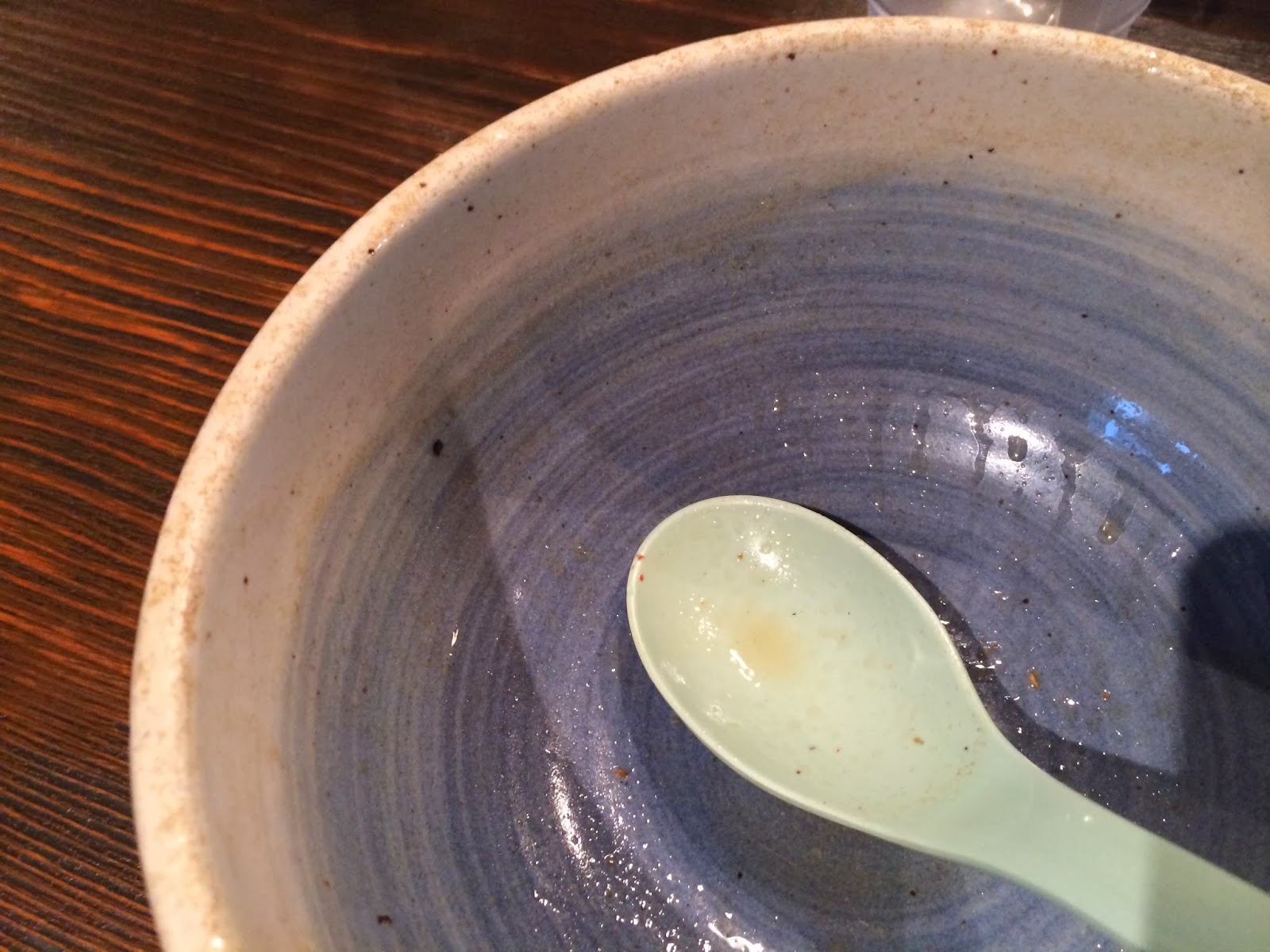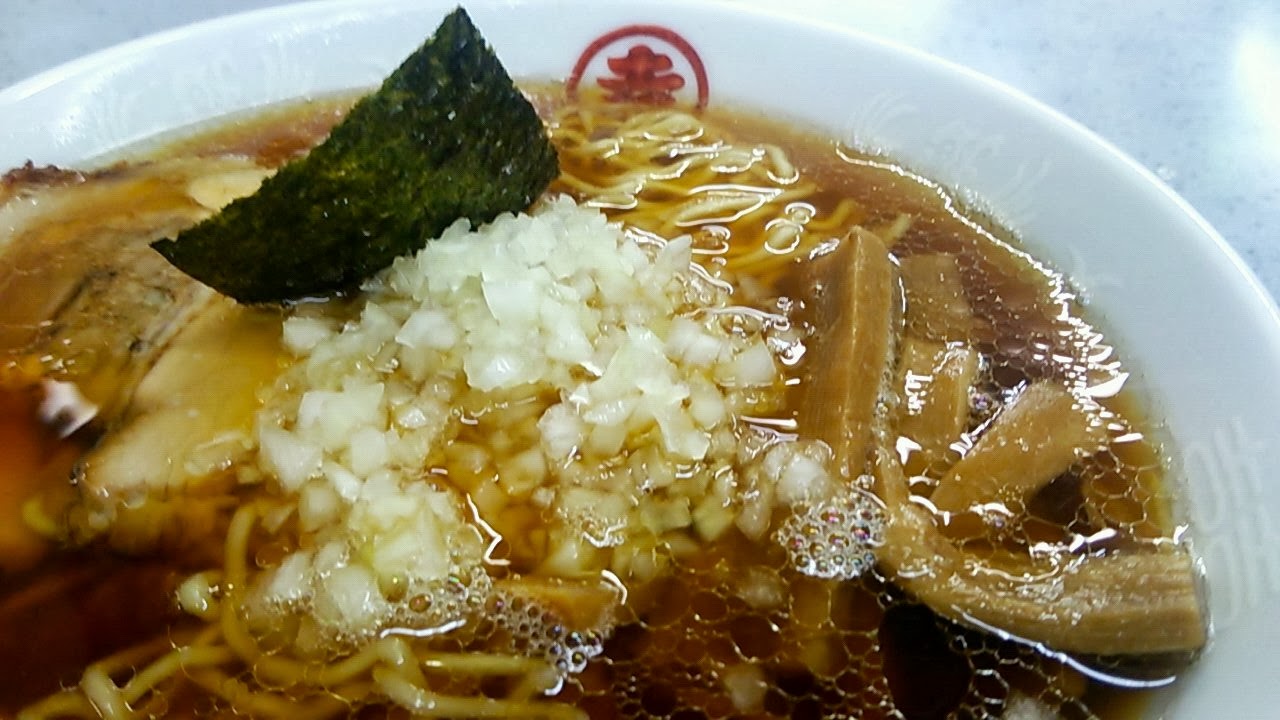I walked into Kissui on a cold and rainy day, just before the lunch rush. I was the only customer inside, and the ramen wasn't completely ready yet.
Instead of using the typical bonito or skipjack tuna dashi of typical shops, Kissui specializes in a shoyu ramen that is derived nearly entirely from sanma. While the fish is most plentiful in the autumn season, it can be found all year round. And thank goodness.
 |
| Shoyu soba (700yen) |
This is a bowl that is as rich and savory as any I've ever had. The smoky essence of the sanma comes through in the first bite, but the quality of the fish never becomes cloying.
The key to Kissui's bowl is its balance, as the soup has so much umami that the toppings need to be slightly restrained, yet never mediocre. The soup clings to the springy noodles; the smoked, thick-cut chashu has a great dry texture; and the onions and mizuna greens provide a great freshness. This is a bowl greater than its parts, whose every player has been orchestrated to evoke an emotion, and whose subtle simplicity displays a martinet control.
Sometimes words can't completely express the feeling of contentment. This was a masterful bowl.
Tokyo, Toshima-ku, Ikebukuro 2-12-1
Closest stn: Ikebukuro
Open from 1130am-3pm and 6-1030pm (closed Tuesdays, slightly earlier on weekends)
Hearts



















































